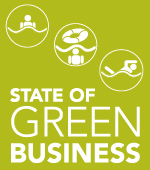Toxic Concerns Spur Greener Alternatives
<p>Revelations of toxics ingredients in consumer products reached a crescendo in 2010, even as companies and governments work feverishly on new, safer alternatives.</p>

Revelations of toxic ingredients in consumer goods reached a crescendo during 2010, elevating the topic on the agendas of companies, activists, and regulators alike. Toxics, endocrine disruptors, carcinogens, and other chemical evils seemed to be showing up everywhere: baby bottles, fast-food toys, celebrity-branded jewelry, mattresses, wallpaper and flooring, food packaging, even cash register receipts.
In that last category, heavy scrutiny focused on bisphenol A, or BPA, the primary component in a plastic used in the resin lining of food and beverage cans. In animal studies, BPA exposure has been linked to everything from cancer and diabetes to reproductive abnormalities and changes in brain development.
BPA came under fire during 2010, the result of scores of media reports that seemed to build on one another. BPA was found to be present in 91 percent of the Canadian population, particularly in teens aged 12 to 19, according to one study. It was found in organic canned foods produced by leading companies like General Mills. The fact that BPA had earlier been found in a popular brand of stainless steel water bottles used by green-minded consumers became a cause célèbre for Oprah, Ellen, Martha, and other talk-show hosts with large viewerships of anxious moms. Politicians in Europe and North America rattled their regulatory sabers, banning -- or threatening to ban -- BPA from products. Companies like Heinz and ConAgra led a run for the exits, banning BPA from their packaging.
It wasn't just BPA. Another toxin in the news was triclosan, an antibacterial and antifungal agent found in many consumer products. Laboratory studies on animals have linked triclosan to changes in hormone regulation, though there was no clear-cut evidence of its impact on humans. Nonetheless, activists pressed U.S. regulators to ban the ingredient from soaps and other products. By year end, the U.S. Environmental Protection Agency was seeking public comment on a petition to ban triclosan for some uses. Colgate-Palmolive said it would move away from the ingredient, as did Staples, the office retail giant, which said that it would consider banning the ingredient from soaps and hand sanitizers sold in its stores.
All of these activities and other forces shined a bright light on the already growing field of green chemistry, a nascent movement that seeks to transform the way products are made, reducing or eliminating the unknown, and potentially harmful, substances commonly used in manufacturing. Green chemistry has been around for well over a decade, though it is only recently hitting its stride as mainstream chemical companies invest in new, more benign ways to arrange molecules that perform the everyday miracles of our modern age.
Example: BASF and Dow Chemical developed a new way to make propylene oxide, which has a worldwide demand of 14 billion pounds and is a chemical building block for many industrial and commercial products. The new method eliminates hazardous effluents, creates up to 80 percent less wastewater and uses 35 percent less energy. Perhaps best of all, production facilities using the new process are 25 percent cheaper to build since they don't need collection and purification equipment.
As BASF and Dow showed, the economics of green chemistry are becoming favorable. And as larger firms begin to press chemical manufacturers to squeeze out problematic ingredients, the volumes are reaching a scale that will increasingly make more green alternatives costcompetitive. For example, Aveda leveraged the scale of its parent company, Estée Lauder, when it asked suppliers of ethoxylated surfactants to make modifications to align with Aveda's green chemistry efforts. The surfactants are widely used in cosmetics as foaming agents, emulsifiers and humectants, but their manufacturing process creates carcinogenic by-products. Leveraging both companies' purchasing power allowed them to reduce costs.
Perhaps the biggest driver of green chemistry is legislation. Increasingly, regulators around the world are eyeing the health and environmental impacts of BPA, triclosan, and other problematic ingredients. In the E.U. and the U.S., and especially in the trendsetting state of California, policy makers have trained their sights on drastically reducing public exposure to toxics.
The regulators at the U.S. EPA appears to have awoken from a long slumber to take a proactive role in chemical regulation. During 2010, the agency said it was adding 700 chemicals to the list of those being put through its ToxCast screening system, which subjects chemicals to 500 quick tests. But that's still a drop in the bucket: More than 84,000 chemicals are registered in the United States, and due to current laws, the EPA has been able to order tests on only a few hundred of them, and take action on fewer still.
Perhaps more significant was an EPA pronouncement that could lift the veil of secrecy surrounding chemicals in products. The rule, handed down early last year, says that companies that submit information on chemicals that pose substantial risks to humans and the environment, will not be able to claim that the identities of the chemicals are confidential business information. One study showed that companies had been able to claim confidentiality on some 17,000 registered chemicals.
And in California, a debate stewed throughout the year, as yet unresolved, over the fate of a Green Chemistry Initiative. Among other provisions, it would require companies that manufacture anything deemed a chemical of concern to perform an assessment of alternatives. The hope is that shining a spotlight on non-toxic options will leave companies with fewer reasons to continue with toxic business as usual.






